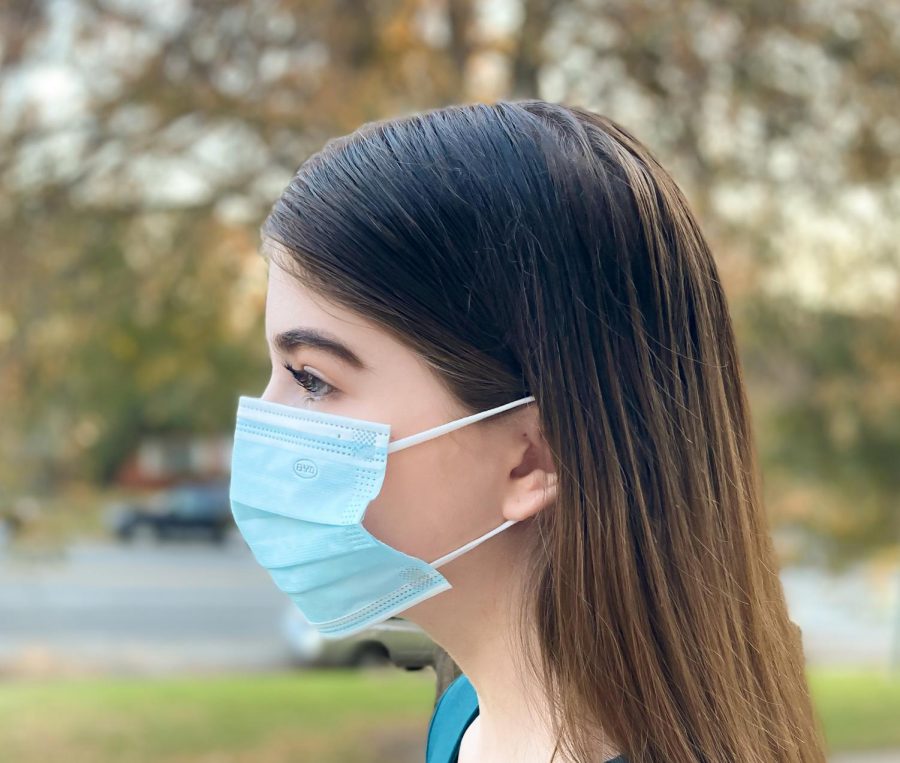Johnson & Johnson Vaccine Pause Lifted After FDA and CDC Safety Review
U student Kristin Thompson poses for photograph. (Photo by Hailey Danielson | Daily Utah Chronicle)
May 4, 2021
Over a year after the first person contracted COVID-19 in the United States and after over 133.4 million Americans have received their first dose of the COVID-19 vaccine, news broke out on April 13 that the use of single-dose Johnson & Johnson vaccine would temporarily be paused.
As with any vaccine, there are certain risks of a reaction and possible side effects. However, this temporary pause came after reports of an abnormal reaction to a vaccine: blood clots. A rare blood clotting issue had affected six women and killed one — each after receiving the J&J vaccine — at the time of the pause, with that number amounting to 17 cases less than a month later.
According to the CDC, all 17 people had thrombosis with thrombocytopenia syndrome, or blood clotting with low blood platelet levels. 14 of those people suffered from cerebral venous sinus thrombosis in combination with low levels of blood platelets.
10 days later, on April 23, the pause was lifted and vaccine labels were changed to warn people to seek medical attention if they develop worrying symptoms.
After a thorough safety review conducted by the CDC and FDA, it was determined that the recommended pause should be lifted and the use of the vaccine should continue.
“The FDA has determined that the available data show that the vaccine’s known and potential benefits outweigh its known and potential risks in individuals 18 years of age and older,” the official news release read.
There have been nearly 8 million doses of the J&J vaccine so far in the United States, with the vast majority of recipients experiencing little to no side effects.
If a person starts to feel unwell after getting the J&J vaccine, there are a few signs to look out for. Individuals who get a severe headache, abdominal pain, leg pain or shortness of breath all within three weeks after getting the J&J vaccine are advised to contact their doctor immediately.
“The potential adverse reaction caused by the Johnson & Johnson vaccine is extremely rare, possibly occurring at a rate of one in a million,” said Director of Media Relations and Content Marketing for University of Utah Health Kathy Wilets.
In Utah, there have been no reported problems with the J&J vaccine as of yet. The Utah Department of Health says almost 77,000 vaccine shots distributed were from J&J.
“U of U Health will follow further guidance from the CDC and FDA, which are currently reviewing data and assessing the significance, recognition and treatment of the potential adverse event,” Wilets said.
Although there may be vaccine hesitancy, the safety standards and effectiveness against contracting COVID-19 are strong regardless of the vaccine.
Dr. Emily Spivak, an infectious disease physician at the University of Utah, said side effects can be reassuring as it is a sign of a person’s immune system working and developing a response to the vaccine.
The risk of taking the vaccine may be better in the long run with some temporary side effects rather than choosing to forego the vaccine and potentially contracting COVID-19. The chances of having a severe reaction are low, especially in the case of the J&J vaccine.
“All these vaccines have prevented a number of people from going into the hospital or dying from [COVID-19], which really is significant considering the number of people that we have lost to this disease,” Spivak said.








Amali Wijesundara • May 9, 2021 at 3:27 am
Very valuable information. Written with clarity and well researched. Also conveys the message of the importance of vaccination to be safe from Covid 19
Dr.A.M.W.K.Tillakaratne • May 8, 2021 at 8:08 pm
Ms.MALINKA’s article is well researched and written with clarity; like done by a professional Doctor.Educational and useful.
More strength to her hands and congrats.